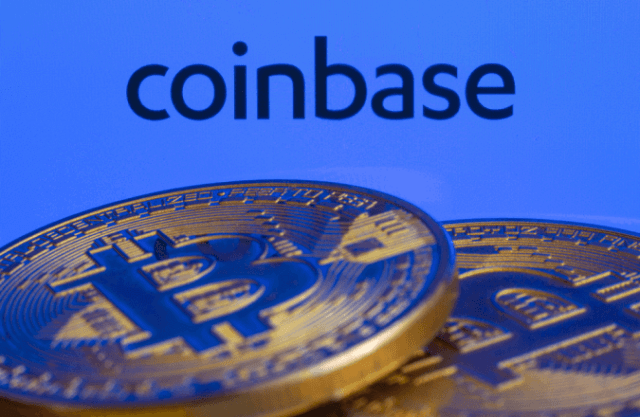How to trade Tesla

Learn about Tesla, the company and its history. Find out the Tesla share price journey, its share trading hours, and how to trade Tesla CFDs with Capital.com.
What is Tesla?
Founded in 2003 by engineers and entrepreneurs Marc Tarpenning and Martin Eberhard, Tesla is a high-profile global electric vehicle manufacturer, and the world’s largest automaker by market capitalisation.
Named after pioneering inventor Nikola Tesla, the company manufactures innovative battery-powered electric vehicles, and holds a market share of over 50% in the US electric vehicles sector. The company’s debut model was the 2008 Tesla Roadster, the first mass-produced battery-powered car approved for use on public roads. This model was followed by the launch of the multi-award-winning Model S in 2012.
In 2015, the company diversified into the energy industry and acquired solar energy business SolarCity the following year, becoming a manufacturer of solar panels and energy storage devices. Tesla also sells regulatory credits to business customers.
Tesla was the first American car company to IPO since the Ford Motor Company when it went public on the Nasdaq Stock Market on June 29, 2010, under the ticker symbol TSLA. The company issued 13.3 million shares at a price of $17 each.
Tesla was added to the US 500 index in December 2020, and is often ranked in the top 10 constituents by market capitalisation.
What is Tesla’s stock price history?
Tesla’s stock price history has seen dramatic price fluctuations since its 2010 IPO, which raised a total of $226 million. On its first day of trading, the company’s shares opened at $17 and closed over 40% higher at $23.89.
The early days of trading were volatile for Tesla. On 7 July 2010, just nine days after the IPO, the stock fell 93.82% below its IPO price to an all-time low of $1.05, and remained relatively low in 2011 and 2012.
In April 2013, following Tesla’s Q1 2013 profit report and its first profitable quarter, the share price rallied, reaching a yearly high of $194.50 on 30 September 2013. The following month, at the opening of a Tesla showroom in October 2013, Tesla CEO Elon Musk stated that ‘The stock price that we have is more than we have any right to deserve’.
By the end of 2013, Tesla stock was back down to $10.03 in an example of market correction. Investor confidence also declined after news reports of the Model S crashing and catching fire.
2020 was a significant year for Tesla. Despite the Covid-19 pandemic’s negative impact on the stock market and the automotive industry, the company’s share price accelerated. On 10 June, Tesla overtook Toyota as the most highly capitalised automobile business. Tesla was added to the S&P 500 in December 2020, boosting investor confidence and trust.
The stock price continued to be volatile in 2021, with several rallies followed by corrections, yet maintained an overall upward trend. Plans for the company to invest $1.5 billion in bitcoin announced in February 2021 were met with investor enthusiasm and price growth, but news of production delays led to a sharp correction later that month. The stock price rebounded in March that year following the release of the Q1 2021 report and the stock price reached a new record high by November.
Tesla reported increased vehicle delivery numbers and revenue growth for 2022, yet its share price ended the year 65% down on its closing price in 2021 in large part due to the 3-for-1 stock split that took place in August. Musk also acquired Twitter (now ‘X’) in 2022, which prompted investor concerns about his strategic priorities.
The Tesla stock price was turbulent in 2023, growing by 150% from January to July before falling again by the end of the year. A decrease in year-on-year automotive sales, semiconductor chip shortages and supply chain disruption slowed down vehicle production and deliveries, and Tesla recalled almost 200,000 vehicles due to a camera malfunction.
The downward trend continued in 2024 for various reasons. Tesla reported a decline in profits by more than half in Q1 2024 compared to the previous year and earnings failed to meet expectations. Today, the stock remains prone to volatile periods, making it advisable to closely follow the company’s key price drivers.
(Past performance is not a reliable indicator of future results)
What factors might affect the Tesla live stock price?
Tesla’s stock price can be impacted by a range of key sector-specific fundamental events. Here are a few of the main factors that traders should watch out for.
- Financial performance/earnings reports: Tesla releases its financial reports on a quarterly basis, and such releases have historically impacted its share price. For example, the company's Q1 2023 and Q3 2021 releases caused Tesla’s stock value to increase significantly over the month. Likewise, its announcement of price reductions in April 2024 caused its stock to fall. Such financial reports provide valuable information about a company’s performance like revenue, sales and profits.
- CEO and leadership: while many attribute Tesla's success to the leadership of Musk, the CEO’s often unpredictable behaviour on social media has resulted in both positive and negative share price movements. For example, Tesla’s stock price jumped in 2018 when Musk tweeted a claim that ‘investor support is confirmed’ to take Tesla private at $420 per share. However, the plan never materialised and the SEC charged Musk for defrauding investors, causing the share price to fall.
- Vehicle delivery and production: Historically, Tesla’s vehicle production and delivery reports have shown a strong correlation with share price movements. These targets rely on the robustness of Tesla’s supply chain and its capacity to adapt to changing macroeconomic conditions. The supply chain and production levels directly impact the number of vehicles Tesla can deliver to market, influencing its stock performance.
- Competition: Tesla was seen as a disruptor in the automotive market when it released the Roadster in 2008, which was the first fully electric vehicle on the market. At that time, Tesla’s greatest challenge was to sell the concept of electric vehicles to the world, but in an increasingly eco-conscious landscape, competition is now fierce – and in 2023, 18% of global car sales were electric.
- Product launches and innovation: product launches tend to attract market anticipation and excitement, and Tesla’s expansion into new markets, such as commercial vehicles with the 2023 Cybertruck line, opens up additional revenue opportunities for the company. Technological innovation and new features also help Tesla maintain a competitive edge and may bolster the share price in turn.
What are Tesla’s stock trading hours?
Tesla’s stock market trading hours are Monday to Friday from 2:30pm to 9:00pm (UTC).
If you choose to trade CFDs, you can follow the Tesla stock performance live in US dollars with the comprehensive Tesla share price chart.
Monitoring the company’s activity can help you to keep an eye out for any key fundamental or technical events that may affect short-term movements in the share value.
How to trade Tesla shares with CFDs
If you want to take a position on Tesla shares, you have two options. First, you can buy physical shares in the company through the exchange on which it’s listed. In this case, investing in Tesla stocks means you will own a share, or shares, in the company. This can be considered a long-term investment, as you’re hoping for the price to rise over time.
Alternatively, you can trade a derivative product such as a contract for difference (CFD) on the underlying Tesla stock market price, and speculate on its price movements without actually owning the asset. A CFD is a financial contract, typically between a broker and a trader, where one party agrees to pay the other the difference in the value of a security, between the opening and closing of the trade.
CFD trading is unlike traditional investing. With CFDs, you can either hold a long position (speculating that the price will rise) or a short position (speculating that the price will fall). CFDs are considered a short-term trade, as they tend to be used within shorter timeframes.
Another key difference between buying physical Tesla shares and trading through a derivative is the leverage that can be employed with the latter. CFDs are traded on margin, which means that a trader can get exposure to larger positions with a relatively small outlay. In this scenario, both your profits and losses are amplified, making such trading risky. You can learn how to trade shares in our comprehensive guide to shares trading.
To trade Tesla stock CFDs with us, just sign up for a Capital.com account, and once you’re verified, you can use our advanced web platform or download our intuitive yet easy-to-use app. It’ll take just a few minutes to get started and access the world’s most-traded markets.
Why trade Tesla CFDs with Capital.com
Trading CFDs with Capital.com means you’ll enjoy an intuitive, supremely easy-to-use platform, 24/7 support, fair and transparent pricing, along with award-winning education to help build your experience in the markets.* You can seamlessly integrate our smart platform with elite third-party software TradingView and MT4, and refine your strategies with our risk-free demo.
*Awarded best-in-class for education at ForexBrokers.com’s 2024 Annual Awards
FAQs
Who owns Tesla?
Tesla is a publicly traded company and does not have a single or majority ownership. Musk is the largest individual investor and owns 715.02 million shares, just over a fifth of total outstanding Tesla shares. The largest institutional investors are investment and asset management groups Vanguard Group, owning 7.2% of Tesla stock, and Blackrock, which owns 5.9%.
How much is Tesla worth?
As with any asset, the Tesla share price is dynamic and liable to change at any time. If you trade this stock, it’s important to check out the Tesla chart frequently to keep on top of price movements, as well as retain a strong understanding of the fundamental and technical influences that can cause the price to shift.
What market is Tesla listed on?
Tesla has been listed on the Nasdaq Stock Market since 2010, when Tesla became the first US automaker to go public since the Ford Motor Company in 1956.
How to buy Tesla shares
If you want to invest in Tesla, you can buy and own the physical share, for example through a stockbroker, at a price you think you can profit on in time. Alternatively, trading a derivative, for example through a CFD, can give you leveraged exposure to the underlying price without ownership. However, leverage means that both your profits and losses are amplified, making it risky.
You can also access Tesla shares indirectly as part of a diversification strategy by trading indices such as the US 500.
What happens if you buy Tesla stock today?
Whether Tesla is a good stock to buy is dependent on market conditions and the individual judgement of traders. On a technical level, you might consider technical indicators such as the RSI or MACD to identify potential support and resistance. From a fundamental standpoint, a knowledge of the standing of competitors, earnings release timings, and the regulatory landscape are all key factors that could influence your buy or sell decisions.
Visit our other complete guides

How to trade Uber
